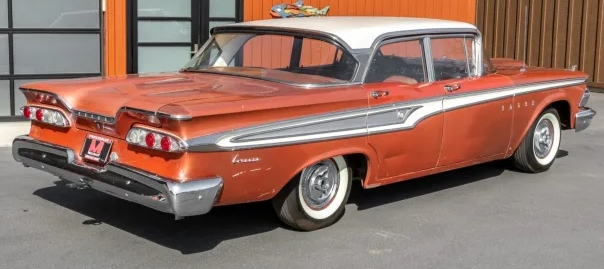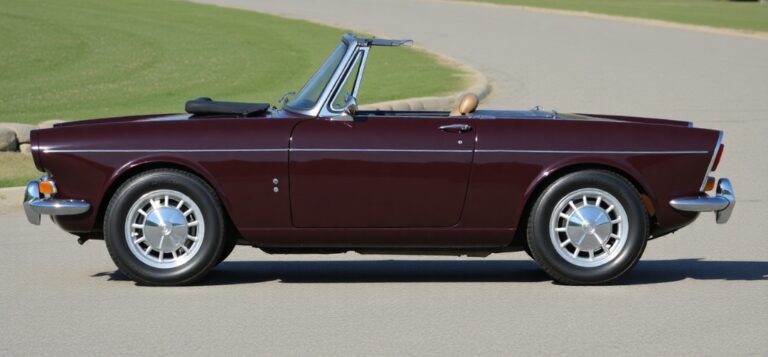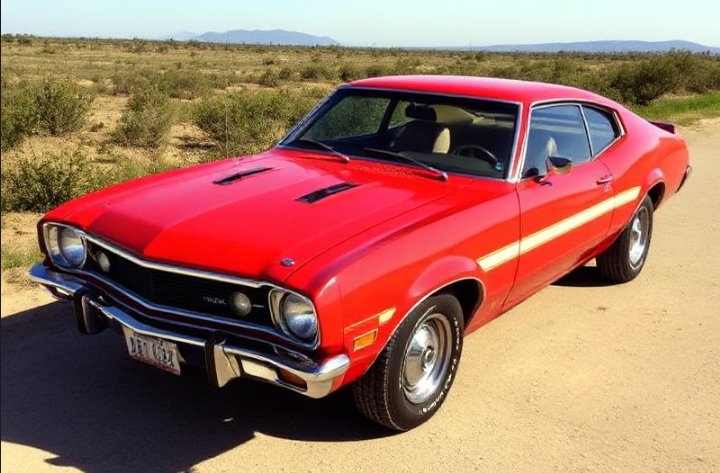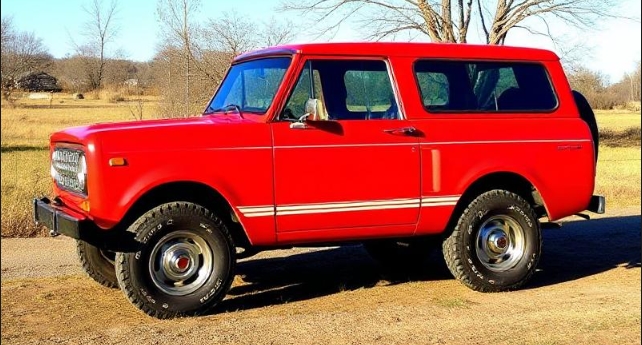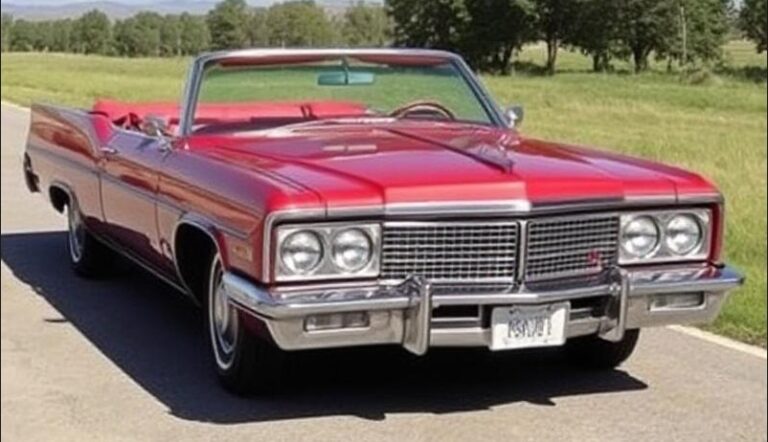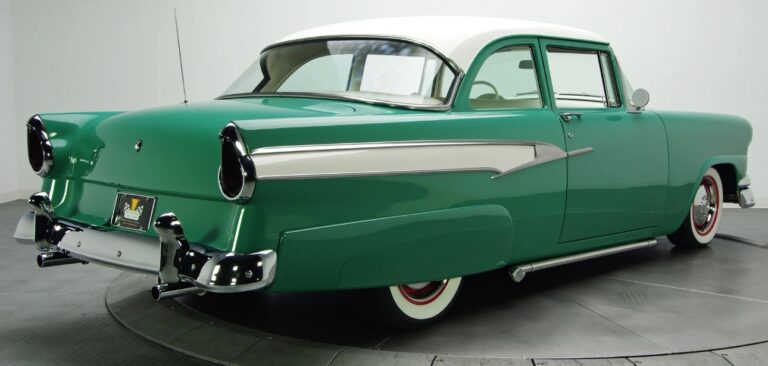The Evolution of the Ford Edsel: A Comprehensive Overview
The Ford Edsel, a name synonymous with one of the most infamous failures in automotive history, was produced by the Ford Motor Company from 1958 to 1960. Despite its short lifespan, the Edsel remains an intriguing case study in automotive design, marketing, and consumer expectations. This article will explore the origins, model offerings, and ultimate demise of the Ford Edsel, while reflecting on its legacy and the lessons learned from its evolution.
Origins of the Edsel
The Edsel was conceived in the mid-1950s, during a period of unprecedented growth and competition in the American automotive industry. Ford recognized a gap in the market for a new line of cars that would bridge the divide between the mainstream Ford lineup and the luxury Lincoln brand. This led Ford to establish a separate division tasked with creating a completely new automobile that would appeal to the evolving tastes of American consumers.
Named after Edsel Ford, the son of company founder Henry Ford, the Edsel was meant to represent innovation and excitement, embracing the consumer culture of the post-war era. Early market research indicated a demand for a car that featured both avant-garde design and practical features, and thus began the Edsel’s development.
Years Produced and General Overview
The Ford Edsel was produced for a total of three model years between 1958 and 1960. Despite the initial excitement and extensive marketing campaign, it faced significant challenges from the outset, resulting in disappointing sales figures that led to its eventual discontinuation.
The Edsel’s production ran as follows:
- 1958: The debut year of the Edsel.
- 1959: The Edsel returns for a second year amid a changing automotive landscape.
- 1960: The final year of production.
Model Offerings and Trim Levels
The Edsel was introduced in 1958 with three primary models, differentiated by trim levels and features.
1958: The Debut Year
In its inaugural year, the Edsel was marketed under three main model series:
- Edsel Ranger: Positioned as the entry-level model, the Ranger appealed to a broader audience with its price point and versatile features. It featured an array of options that allowed buyers to customize their vehicles according to their needs.
- Edsel Pacer: The Pacer model was a mid-range offering that included more luxurious trim and additional features. This model catered to buyers looking for a blend of comfort and style, emphasizing practicality without sacrificing sophistication.
- Edsel Corsair: The Corsair was the flagship model for 1958, showcasing high-end features and stylish design elements. It aimed to compete with the more expensive luxury vehicles while remaining within striking distance of affordability.
Trim Levels
In 1958, each model also offered several trim levels and configurations, which included:
- Standard: The base model equipped with essential features.
- Deluxe: Included upgraded interior and exterior finishes, along with additional conveniences.
- Custom: A specialized trim that offered the highest level of luxury and technological advancements.
Engines and Performance
The 1958 Edsel models were available with various engine options, notably including the innovative 361 cubic inch V8 engine. This performance-oriented engine was touted for its power and smooth drive, aligning with the era’s demand for muscle and performance in cars.
1959: The Turning Point
For 1959, Ford made various adjustments in response to the lukewarm reception of the Edsel from the previous year. The company faced mounting challenges in the automotive market, including a recession that hurt consumer spending.
- Edsel Ranger: Grounded in practicality, the 1959 Ranger underwent cosmetics changes to modernize its appearance, which included new trim and additional color options.
- Edsel Pacer: As a mid-option, the Pacer saw upgrades in its engine choices, still appealing to buyers seeking performance without sacrificing body style.
- Edsel Corsair: The Corsair continued to represent the luxury segment but incorporated more streamlined aesthetics. Ford reworked aspects of its design to potentially attract a wider array of consumers.
Trim Levels and Changes
In 1959, Edsel offered similar trim options as before, but with more emphasis on customization and luxury features, recognizing the need to compete effectively in an aggressive marketplace.
.
LOTS of great automobiles have been made, but what are The Most Popular Vintage Cars ever produced?
.
1960: The End of the Line
By 1960, Ford made the difficult decision to reduce Edsel’s offerings to just one model, the Edsel Ranger, which focused on affordability and functionality. Sadly, it was too little too late. The automobile faced fierce competition and a rapidly shifting market that leaned towards compact cars, ultimately leading to dwindling sales and a lack of consumer interest.
Final Models and Legacy
Despite introducing new options and a singular model approach, Ford announced the discontinuation of the Edsel brand in late 1960 after producing a mere 3,590 vehicles that year. With this end came a re-evaluation of the initial vision behind Edsel and the marketing strategies that had attempted to accompany it.
The Legacy of the Edsel
Even though the Ford Edsel is often remembered as a monumental failure, its legacy is complex. The Edsel provides valuable insights into market miscalculations, the impact of branding, and the significance of consumer research.
Moreover, the design of the Edsel, characterized by its unique “horse-collar” grille and innovative features such as the “Teletouch” transmission, has garnered interest among classic car enthusiasts and collectors. Today, the Edsel is celebrated for its quirks, and owners often join communities and clubs advocating for its preservation, helping to secure its place in automotive history.
Conclusion
In retrospect, the Ford Edsel serves as a testament to the unpredictable nature of consumer preferences and market forces. From ambitious beginnings to a troubled end, the Edsel remains a curious part of American automotive lore—an emblem of what happens when innovation encounters reality. While its tenure was brief, the lessons drawn from the Edsel’s evolution continue to resonate within the automotive world, reminding manufacturers of the delicate balance between creativity, consumer desires, and economic viability. The story of the Edsel is a reminder that automotive greatness can sometimes lie in the effort to break new ground, even when the results fall short of expectations.
